Budget PCL82 stereo tube amplifier
Hello
I would like to present my stereo tube amplifier, built on two PCL82 tubes. It is a very budget amplifier, the cost of production did not exceed around PLN 150.
Let's start from the beginning.
August 2020, Dominican fair in Gdańsk, while digging through the piles of antiques, I found two brand new PCL82 lamps, still in boxes. Lamps intact, price PLN 2 / piece, inside one box there is even a bill from 1975.
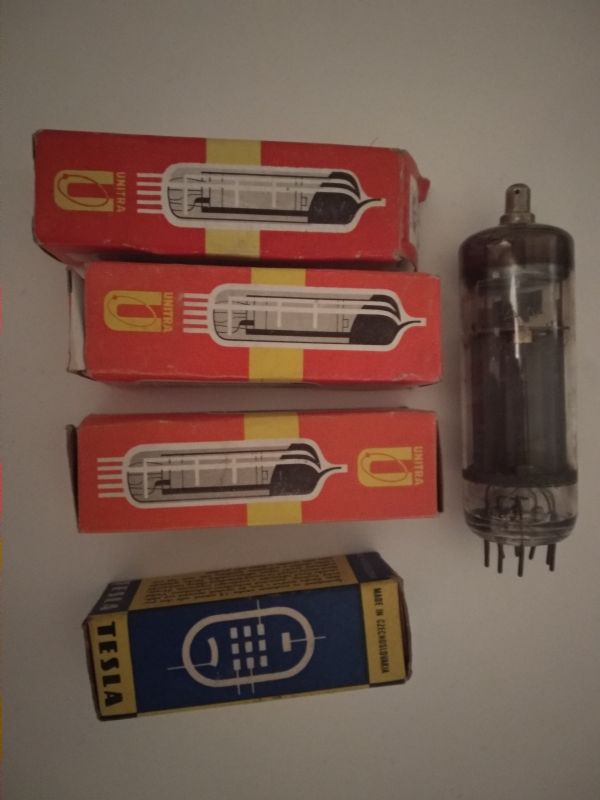
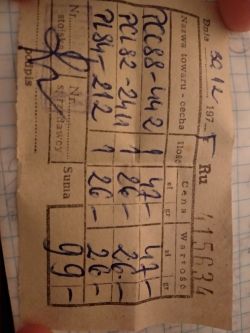
I decided to buy such lamps, because why not, PLN 4 no money and the lamps looked new. Later measurement on the meter showed the emission in both cases slightly above the catalog, i.e. the lamps are really new. One Telam, the other Polamp.
In addition to them, I also bought two used PCL86, they were supposed to be in this amplifier, but the emission measurement showed very high consumption, the emission of pentodes around 30-40%, which is total dead bodies.
We had to wait a while for the parts for further construction, but I decided to go for a very cheap option, loudspeaker transformers from aliexpress. 5k? / 4-8? ratio, power 3W.
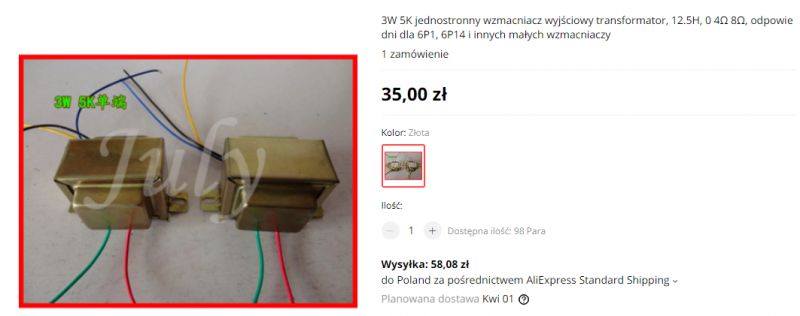
90-a pair of zlotys for two transformers? I take.
Here's what these transformers look like in real life

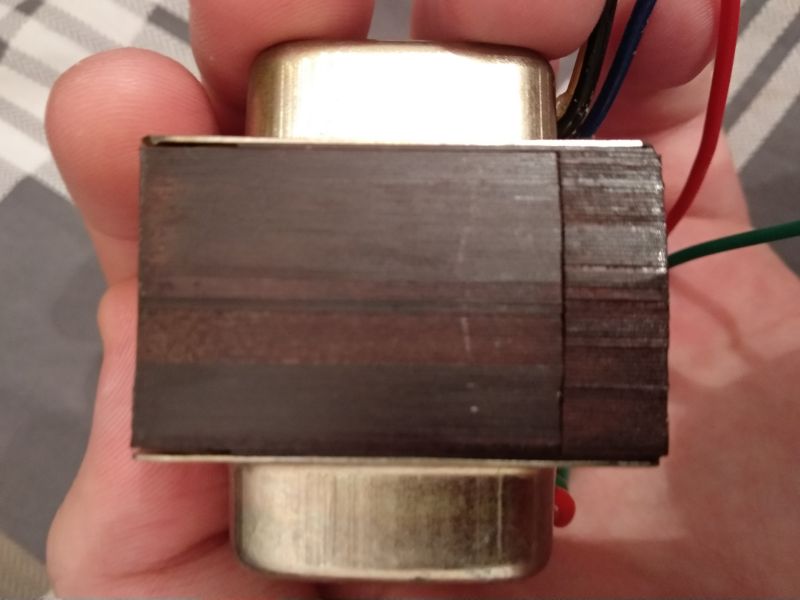
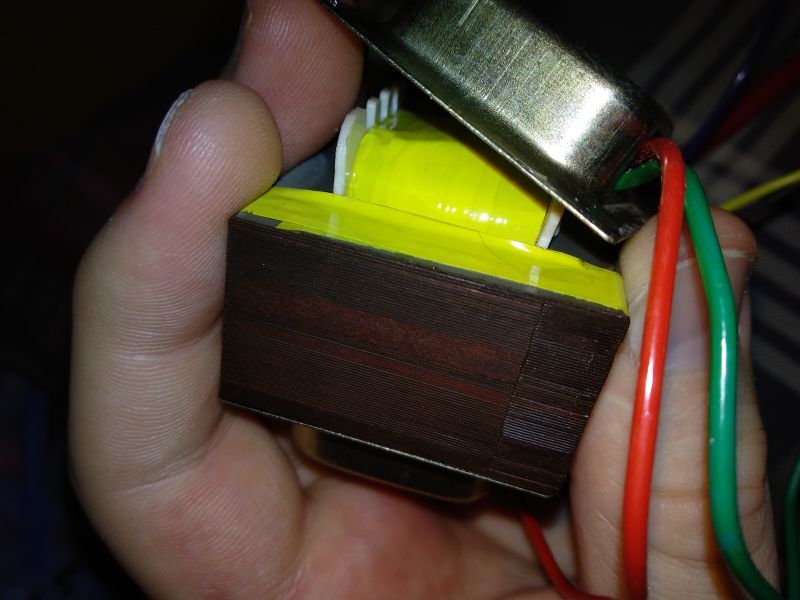
There is a gap, the performance is so-so, but we won't complain, after all, it is supposed to be a budget amplifier, not an audiophile's dream. Primary resistance approx. 500 ?.
By the way, I will notice that by connecting the 8? loudspeaker to the 4? tap, we get a load impedance of 10k?, which allows the use of very cheap and easily available PCL84 (or any lower power tube) in audio applications (for PCL84 such "atypical" load impedances were used, if you believe the catalog who described such a use).
As a housing I bought an ELGIG E145 with dimensions of 50mmx140mmx160mm (height, width, length). It cost me PLN 21.
First thing, cutting holes for lamps and fixing transformers.
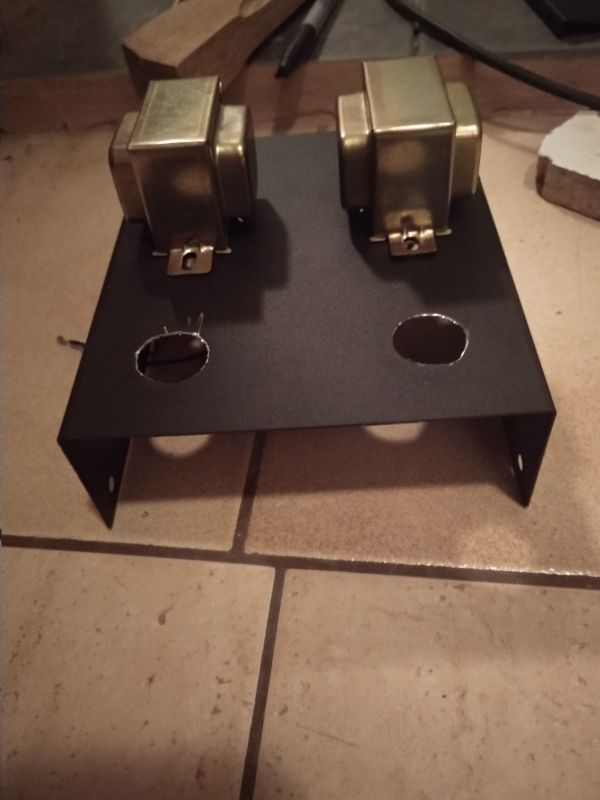
Cutting holes with a dremel is average, he slipped and made a scratch, difficult, it is right behind the lamp so not very visible. In the future I will buy a larger diameter conical drill for making holes for lamps.
Then drilling holes in the panels for banana connectors for speakers and phono sockets.
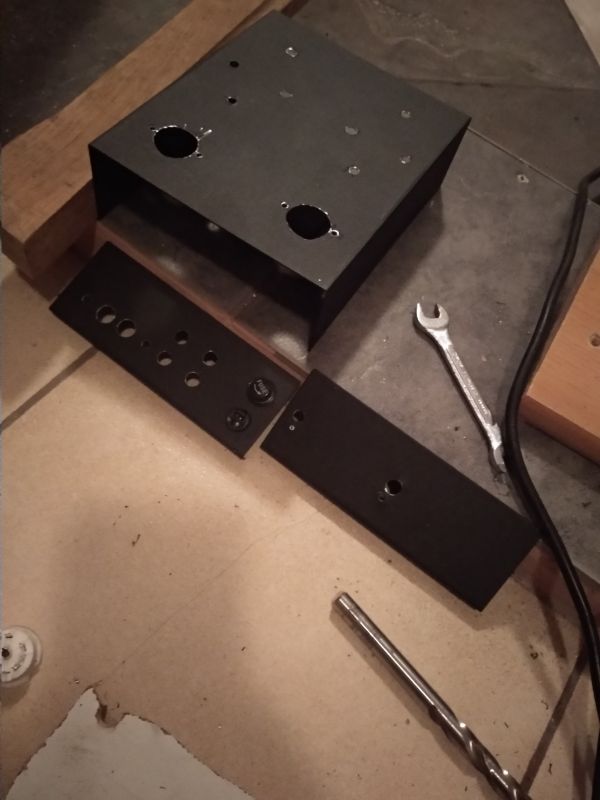
Passing OK
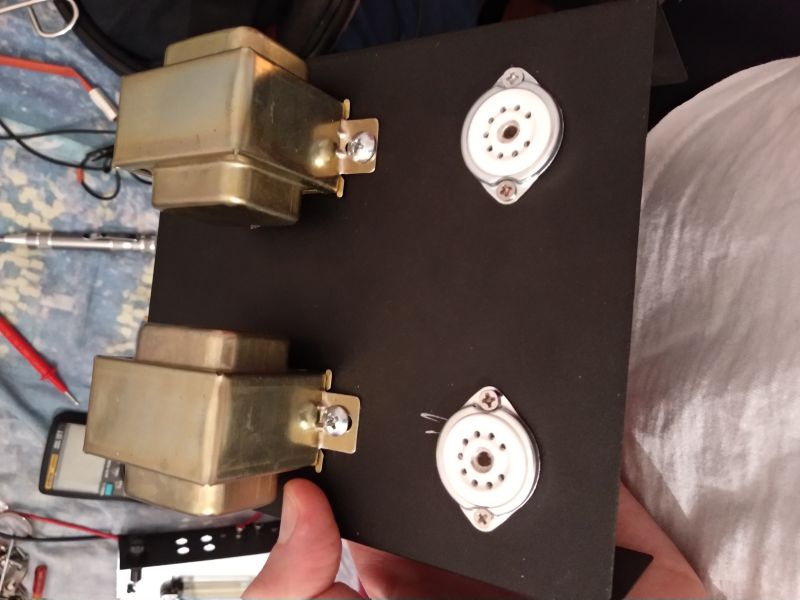
We go on, power.
The main "innovation" of this amplifier is to circumvent the problem of an expensive power transformer by using a flyback pulse power supply.
Here I refer to this thread:
https://www.elektroda.pl/rtvforum/topic3690608.html#19238925
Generally, P-lamps are very suitable for switching power supply, due to the low losses on the diodes (low current) and the possibility of series filing (one thin winding).
UCL82 where the current is only 100mA would be even more advantageous.
The lamps are heated from the first tap (12w) of 48 secondary turns.
Voltage about 40V + resistors 30? 10W and 10? 2W in order to break the voltage, the current around 310mA, i.e. we are within ? 5%.
As for the anode ones, we have 185V, which is enough.
There was some perturbation along the way with the determination of the appropriate primary current. This power supply works all the time with a constant key current, the voltage feedback basically does not work.
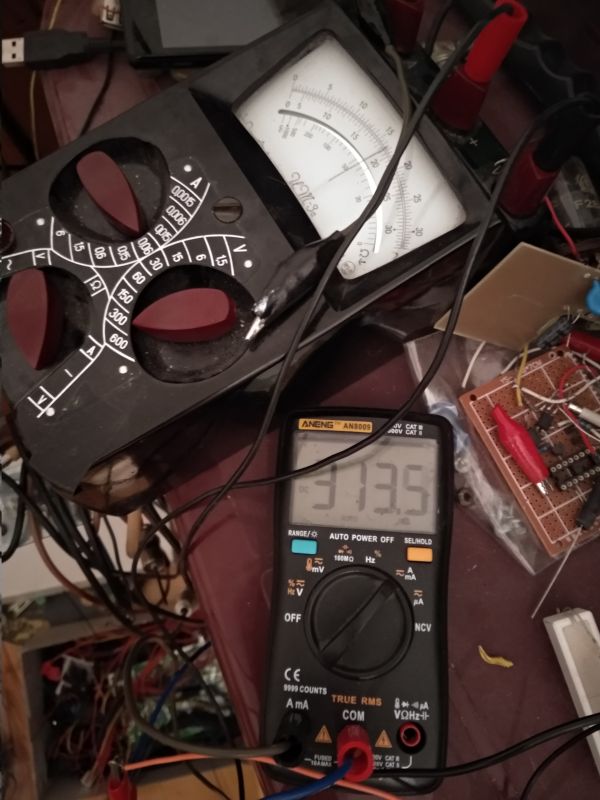
The power supply after the first try-outs.
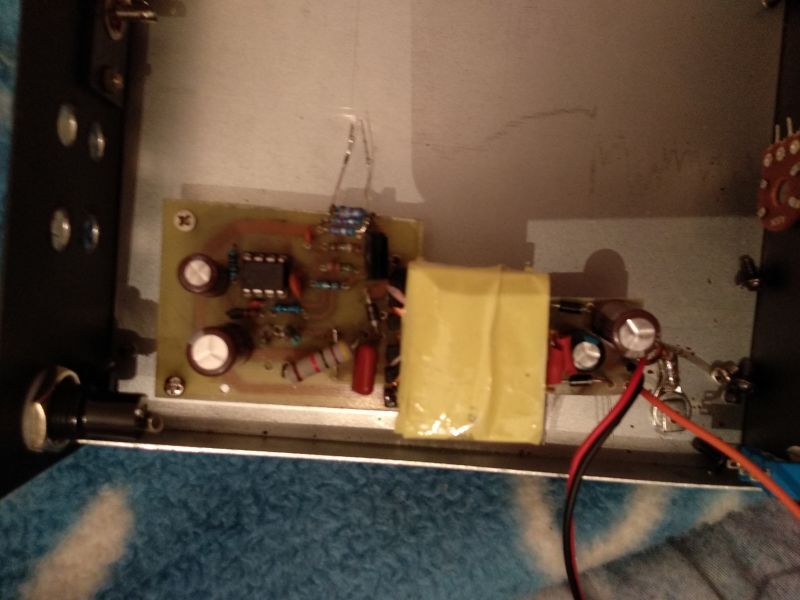
Then the beam from the cinch to the potentiometer at the front (logarithmic 2x50k? .
.
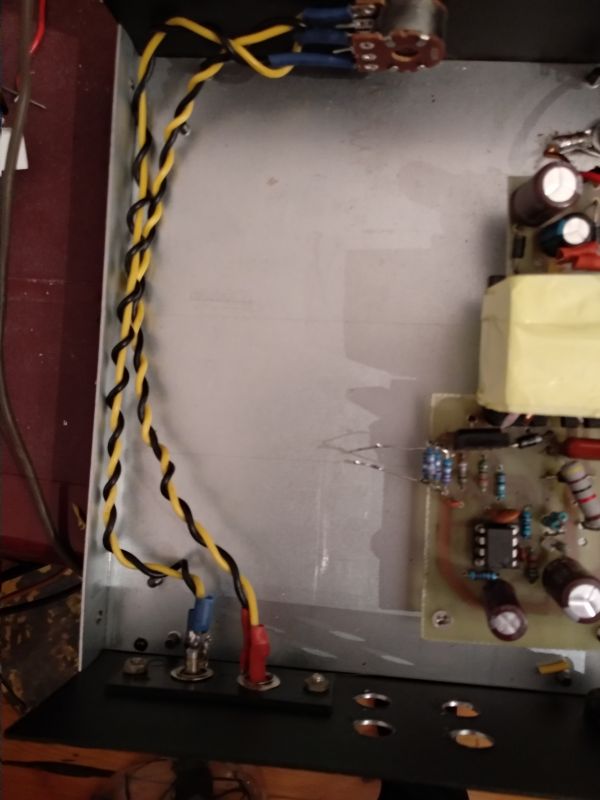
When it comes to construction, it is a simple matter, we solder directly to lamp sockets and other construction elements.

The interior looks like this:
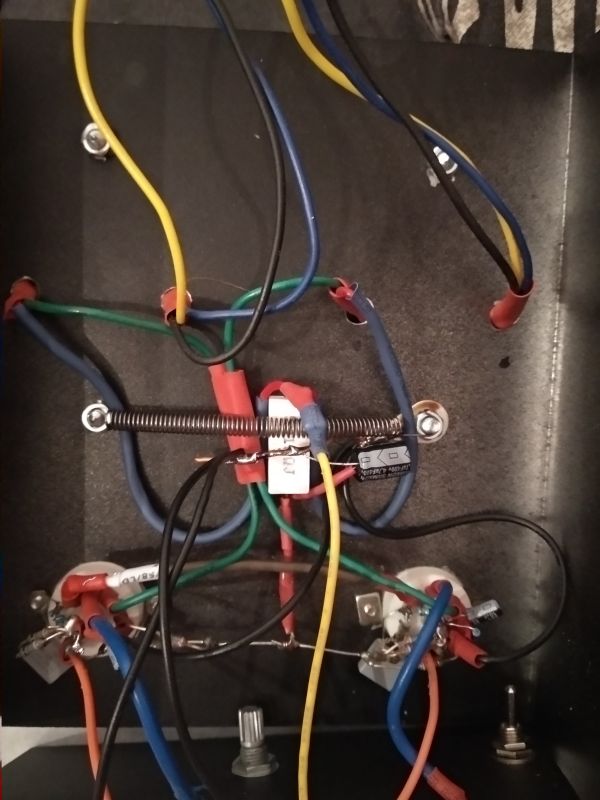
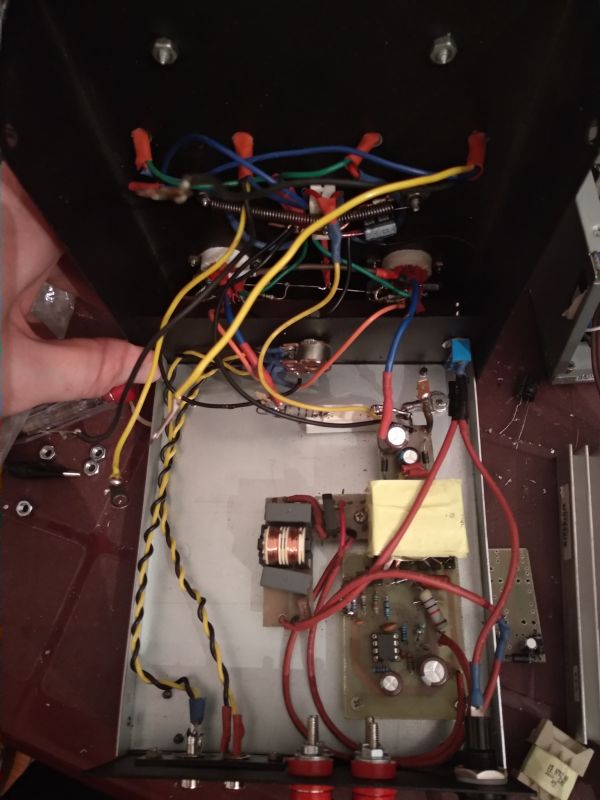
The glow is detachable through the usual 4.8mm slides, so you can easily disconnect, then unscrew the volume potentiometer and the connection to the loudspeaker sockets. The serviceability is also fairly maintained.
As for the scheme:
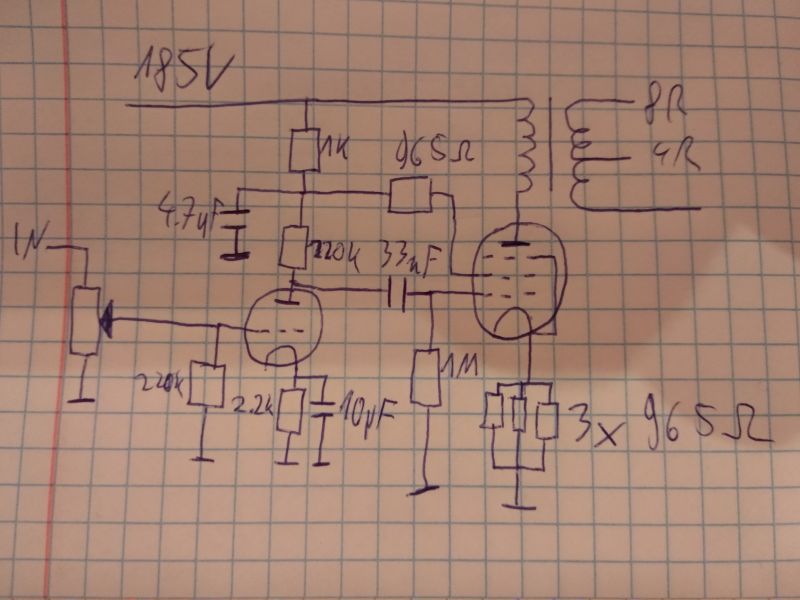
Nothing revealing, a simple amplifier based on a combination tube. I would also like to remind you that the potentiometer has 2x50k?, also the input impedance is significantly lowered compared to a traditional tube amp.
The pentode does not have a capacitor in the cathode, because PCL82 itself is not a king of no distortion (from what I have read, the catalog data is significantly exaggerated in favor), so it is worth giving some negative feedback, also to reduce the gain that we have underneath abundance.
The amplifier looks not bad, although it is a subjective matter, it is definitely not without flaws and distortions, but for PLN 150 I do not complain.
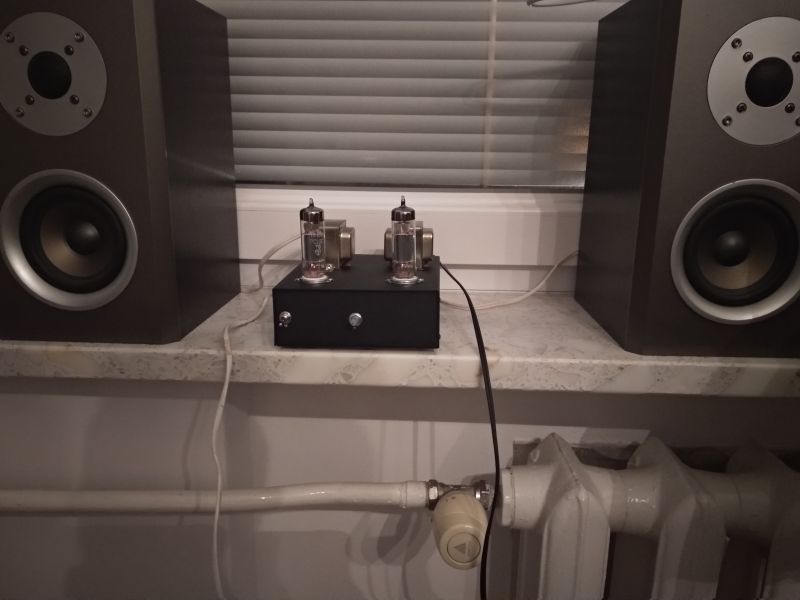
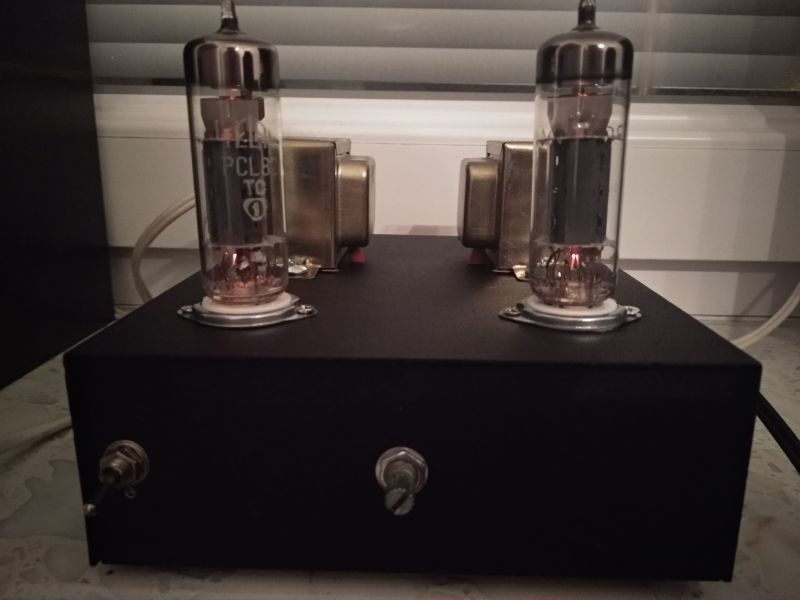
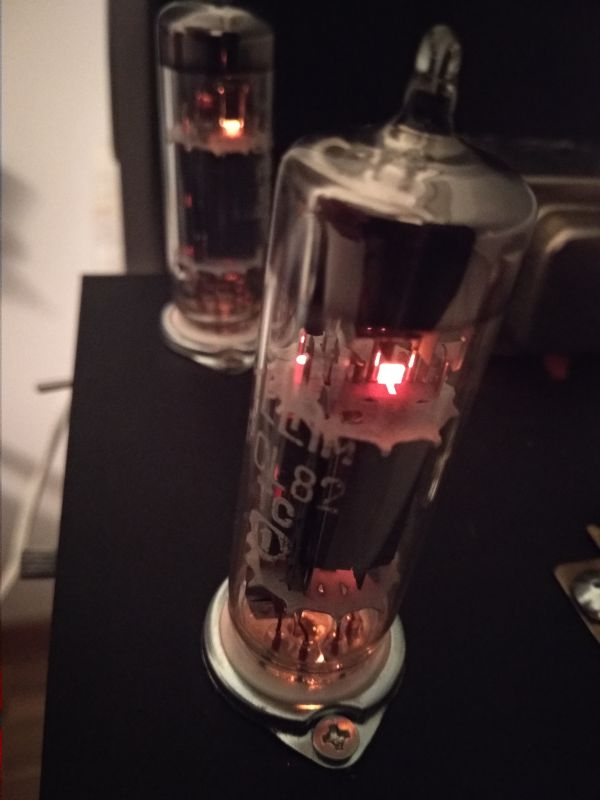
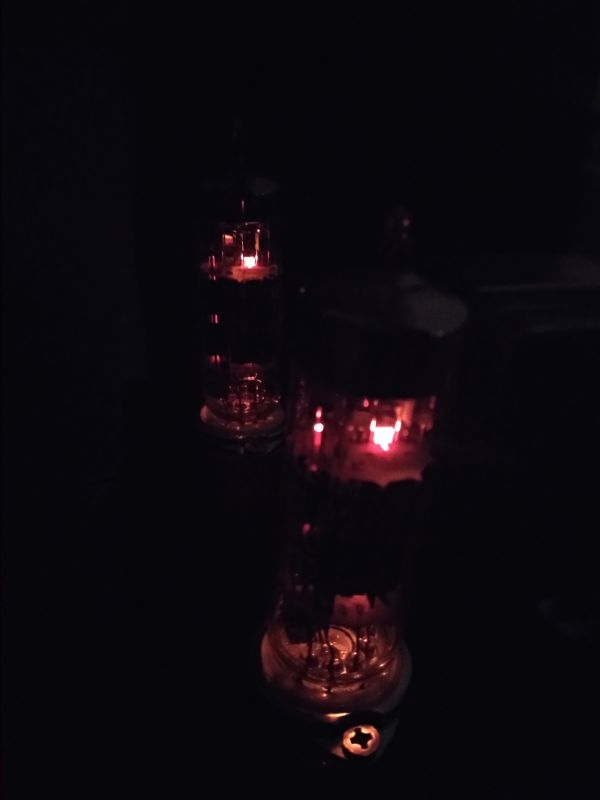
I still add a video presentation
Music: ??? ? - ? ?? ? ?
There is a slight hum, but it's not very noticeable.
Live sound is definitely better than in the movie shot with the phone.
And you have to get the potentiometer knob, that's all and so much.
I built and presented this amplifier, because many people think that a tube amplifier is something expensive and requires components for a lot of money. I built it cheaply, using normally available components, I didn't spend much, and I also have my "tinsel" playing in the room.
I would like to present my stereo tube amplifier, built on two PCL82 tubes. It is a very budget amplifier, the cost of production did not exceed around PLN 150.
Let's start from the beginning.
August 2020, Dominican fair in Gdańsk, while digging through the piles of antiques, I found two brand new PCL82 lamps, still in boxes. Lamps intact, price PLN 2 / piece, inside one box there is even a bill from 1975.


I decided to buy such lamps, because why not, PLN 4 no money and the lamps looked new. Later measurement on the meter showed the emission in both cases slightly above the catalog, i.e. the lamps are really new. One Telam, the other Polamp.
In addition to them, I also bought two used PCL86, they were supposed to be in this amplifier, but the emission measurement showed very high consumption, the emission of pentodes around 30-40%, which is total dead bodies.
We had to wait a while for the parts for further construction, but I decided to go for a very cheap option, loudspeaker transformers from aliexpress. 5k? / 4-8? ratio, power 3W.

90-a pair of zlotys for two transformers? I take.
Here's what these transformers look like in real life



There is a gap, the performance is so-so, but we won't complain, after all, it is supposed to be a budget amplifier, not an audiophile's dream. Primary resistance approx. 500 ?.
By the way, I will notice that by connecting the 8? loudspeaker to the 4? tap, we get a load impedance of 10k?, which allows the use of very cheap and easily available PCL84 (or any lower power tube) in audio applications (for PCL84 such "atypical" load impedances were used, if you believe the catalog who described such a use).
As a housing I bought an ELGIG E145 with dimensions of 50mmx140mmx160mm (height, width, length). It cost me PLN 21.
First thing, cutting holes for lamps and fixing transformers.

Cutting holes with a dremel is average, he slipped and made a scratch, difficult, it is right behind the lamp so not very visible. In the future I will buy a larger diameter conical drill for making holes for lamps.
Then drilling holes in the panels for banana connectors for speakers and phono sockets.

Passing OK

We go on, power.
The main "innovation" of this amplifier is to circumvent the problem of an expensive power transformer by using a flyback pulse power supply.
Here I refer to this thread:
https://www.elektroda.pl/rtvforum/topic3690608.html#19238925
Generally, P-lamps are very suitable for switching power supply, due to the low losses on the diodes (low current) and the possibility of series filing (one thin winding).
UCL82 where the current is only 100mA would be even more advantageous.
The lamps are heated from the first tap (12w) of 48 secondary turns.
Voltage about 40V + resistors 30? 10W and 10? 2W in order to break the voltage, the current around 310mA, i.e. we are within ? 5%.
As for the anode ones, we have 185V, which is enough.
There was some perturbation along the way with the determination of the appropriate primary current. This power supply works all the time with a constant key current, the voltage feedback basically does not work.

The power supply after the first try-outs.

Then the beam from the cinch to the potentiometer at the front (logarithmic 2x50k?

When it comes to construction, it is a simple matter, we solder directly to lamp sockets and other construction elements.

The interior looks like this:


The glow is detachable through the usual 4.8mm slides, so you can easily disconnect, then unscrew the volume potentiometer and the connection to the loudspeaker sockets. The serviceability is also fairly maintained.
As for the scheme:

Nothing revealing, a simple amplifier based on a combination tube. I would also like to remind you that the potentiometer has 2x50k?, also the input impedance is significantly lowered compared to a traditional tube amp.
The pentode does not have a capacitor in the cathode, because PCL82 itself is not a king of no distortion (from what I have read, the catalog data is significantly exaggerated in favor), so it is worth giving some negative feedback, also to reduce the gain that we have underneath abundance.
The amplifier looks not bad, although it is a subjective matter, it is definitely not without flaws and distortions, but for PLN 150 I do not complain.




I still add a video presentation
Music: ??? ? - ? ?? ? ?
There is a slight hum, but it's not very noticeable.
Live sound is definitely better than in the movie shot with the phone.
And you have to get the potentiometer knob, that's all and so much.
I built and presented this amplifier, because many people think that a tube amplifier is something expensive and requires components for a lot of money. I built it cheaply, using normally available components, I didn't spend much, and I also have my "tinsel" playing in the room.



Comments
All the time I thought that I have to spend over PLN 1,000 on a tube amplifier. and you have a nice device at a really low price. [Read more]
It was my first thought after seeing these holes, but then I saw that everything was covered by the lamp holders, so it turned out nice in the end. In my only lamp holder, the sockets are on the PCB located... [Read more]
Hello, As for a home-made design, the amplifier looks pretty good. There used to be a safety rule that in the lower position of the power switch, the device should be turned off. You can see in the... [Read more]
Tell me what did you measure the lamps? [Read more]
And how do you run the wires from the sockets with cables in the screen? The spring is not shown in the diagram as it is in the photos? [Read more]
The wires were cut as I had already established the primary current. As far as I remember, there are 4 resistors of 3.92 ? in parallel. The spring is a mechanical fastening, although it is not the only... [Read more]
I do not recommend 6N1P lamps, they have a filament current of 600mA, better to give 6N2P (300mA filament current). [Read more]
Except that these tubes are different, the 6N1P is a triode with a lower internal resistance, more suited to the ECC82, i.e. for use as drivers. The 6N2P is a close counterpart to the ECC83. Of course,... [Read more]
Everything is nice, the only thing that could be faulted are the unshielded cables and the average aesthetics of the power supply. 150 zlotys for the amplifier is not bad, but mine on the ECL82 exceeded... [Read more]
What is the Dominican Fair in Gdańsk? It is necessary to work on the appearance, even if these knobs will give a lot in terms of the overall effect :) [Read more]
https://pl.wikipedia.org/wiki/Gda%C5%84ski_Jarmark_%C5%9Bw._Dominika Such an event, where there are antiques fairs, you can look for antiques, including radios, electron tubes or other electronic equipment. ... [Read more]
Ok, you are absolved :) Ok. Double insulation, so you made equipment in protection class II. Ie. do you have heat shrink tubing along the entire length of these wires? Because it is not clear from... [Read more]
Well, I even like the current state of the interior less than the average. But from the outside, you only add a knob and it's really OK You figured it out very sparingly (I'm wondering if not... [Read more]
"1001 patents for the use of a spring". Yours is 1002 a patent. Haven't heard about mounting strips? You could even make one yourself on your knee (a strip of laminate with cuts every 0.5 cm for soldering... [Read more]
Hello They are not always needed, especially with high value signals of 1V and more. As for the driver tube, PCC85 or PCC88 (E88CC) double triodes can be used in amplifiers with P-series output... [Read more]
Functional and simple, it is known that the greater the complexity, the greater the likelihood that something will go wrong. Even if the end result will be much better. I will probably commit something... [Read more]